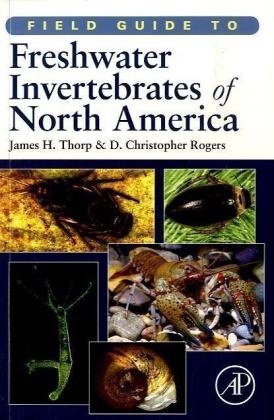Read more
Focuses on freshwater invertebrates. This guide features 362 color photographs and descriptions aid in the identification of species. It is suitable for researchers and students in aquatic biology, and for anglers who use identification of invertebrates to identify fertile fishing areas.
List of contents
1. Using This Book Effectively2. General Techniques for Collecting and Identification3. The Nature of Inland Water Habitats4. A Primer on Ecological Relationships Among Freshwater Invertebrates5. Sponges: Phylum Porifera6. Hydra and Jellyfish: Phylum Cnidari7. Flatworms: Phylum Platyhelminthes, Class Turbellaria8. Hairworms: Phylum Nematomorpha9. Snails: Phylum Mollusca, Class Gastropoda10. Mussels and Clams: Phylum Mollusca, Class Bivalvia 11. Aquatic Segmented Worms and Leeches: Phylum Annelida12. Moss Animals: Phylum Ectoprocta, or Bryozoa13. Introduction to Freshwater Invertebrates in the Phylum Arthropoda14. Mites and Spiders: Subphylum Chelicerata, Class Arachnida15. Fairy Shrimp, Tadpole Shrimp, Clam Shrimp, and Water Fleas: Subphylum Crustacea, Class Branchiopoda 16. Copepods, Fish Lice, and Seed Shrimp: Subphylum Crustacea, Classes Maxillopoda and Ostracoda 17. Aquatic Sow Bugs, Scuds, and Opossum Shrimp: Subphylum Crustacea, Class Malacostraca, Superorder Peracarida 18. Crayfish, Crabs, and Shrimp: Subphylum Crustacea, Class Malacostraca, Order Decapoda 19. Introduction to Insects and Their Near Relatives: Subphylum Hexapoda20. Mayflies: Insect Order Ephemeroptera21. Dragonflies and Damselflies: Insect Order Odonata22. Stoneflies: Insect Order Plecoptera23. True Bugs: Insect Order Hemiptera24. Hellgrammites, Spongillaflies, Caterpillars, and Others: Minor Aquatic Insect Orders 25. Caddisflies: Insect Order Trichoptera26. Beetles: Insect Order Coleoptera27. Midges, Mosquitoes, Blackflies, and Other True Flies: Insect Order Diptera
Report
"IAN'S RECOMMENDATION: For anyone interested in the freshwater animals of North America." --The Guardian's Punctuated Equilibrium
"The strength of this text lies in the narratives describing the form, function, ecology, and collection methods associated with each major group. Consequently, the book is more of a primer or an introduction to freshwater invertebrates, than a field guide. Summing Up: Recommended. Lower-division undergraduates and general readers." --Choice, September 2011, Vol. 49, No. 01

